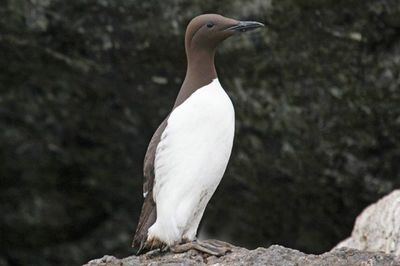Hot Water Blob and Seabird Deaths: EcoWatch
As the planet warms, oceans absorb far more heat than the air. Researchers report patches of warm water in the Pacific, from New Zealand to Alaska. The University of Washington reported on one that killed more than 1 million seabirds. One patch stretched for 1000 miles, increasing temperatures by more than 10 degrees Fahrenheit and killing more than 1 million seabirds, report University of Washington researchers. The researchers theorize the common murres died of starvation after the food supply declined. “Larger fish such as salmon, cod and halibut rely on the same prey as the murres,” reports Sam Nickerson for EcoWatch. “But since fish are cold-blooded and can't self-regulate their body temperature, the warmer waters boosted their metabolic rate and the amount of energy they needed for survival.” Plankton and other food shortages harm other sea lions, whales and other birds as well. The United Nations projects more marine heatwaves. – YaleGlobal
Hot Water Blob and Seabird Deaths: EcoWatch
Researchers identify odd patches of hot water in the Pacific and link one in Alaska to the deaths of 1 million seabirds
Saturday, January 18, 2020
Read the article from EcoWatch about hot water blobs in the Pacific.
Also read the article from Science Alert about a hot patch off New Zealand.

(Source: US National Park Service)
The common murre lives in the northern oceans and nests in rocky cliffs, reports the Cornell Lab on Birds. The birds can live up to 27 years.
EcoWatch
You acknowledge and agree that we and our licensors retain ownership of all intellectual property rights of any kind related to the Service, including applicable copyrights, trademarks and other proprietary rights.